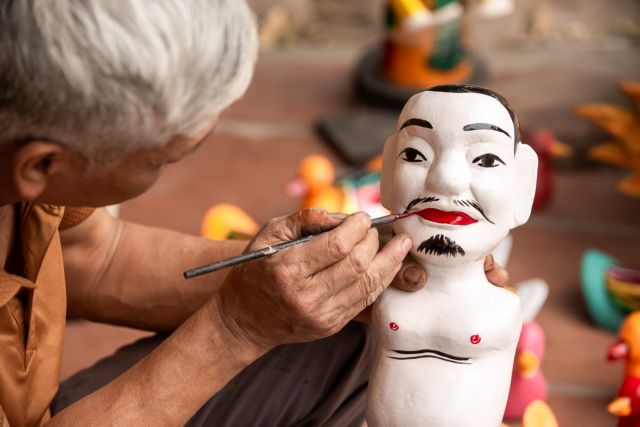 Life & Style
Life & Style

By Bảo Long
They are as symbolic to Việt Nam as conical hats and wonderful food. Water puppetry is truly engraved into the nation’s psyche.
This ancient art is as popular today as it was since the 11th century along the villages of the Red River Delta.
On the surface of the water, these puppets come alive, dancing, laughing and recounting vivid scenes of Vietnamese folk tales.
But behind each puppet, or in this case, underneath, is a talented puppeteer, whose job is to educate, inform and entertain the audience.
Đặng Duy Bằng is one such artisan, a man who has devoted nearly his entire life to the art of water puppetry, creating thousands of puppets in his 40-year career.
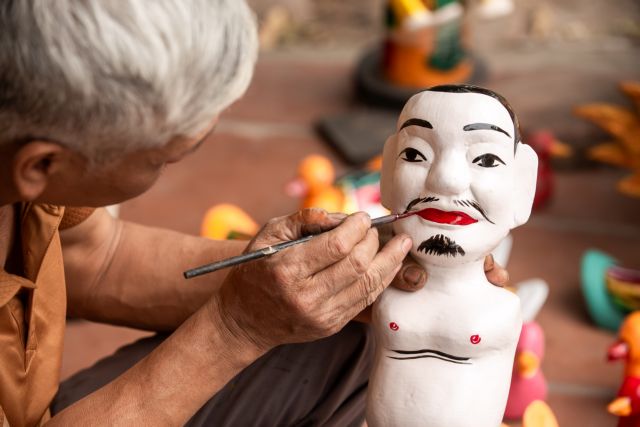 |
| Artisan Đặng Duy Bằng is painting a puppet. — VNS Photos Bảo Long |
A family legacy
For Bằng, his connection to water puppetry is beyond just being a personal career choice, but a sacred responsibility to his family and ancestors.
Born in 1970, into a family with a seventh to eighth-generation tradition of water puppetry, Bằng was immersed in this unique art form from a young age.
The sounds of chèo (popular drama) drums, bamboo flutes and folk tales about Tễu (a typical puppet character who usually introduces the performance and makes the audience laugh) and familiar characters deeply resonated with him from childhood.
“My father used to practise traditional puppetry, I learned it from my ancestors,” Bằng said, his voice filled with pride for his lineage.
The early lessons learned by his father’s side were not only about carving and shaping puppets but also about the history, culture and customs of his homeland.
This solid foundation helped him understand water puppetry's 'folk essence' through its closeness to daily life and its authentic reflection of traditional cultural values.
The puppet is not just an inanimate object but an embodiment of the dreams, aspirations and moral lessons of the Vietnamese people.
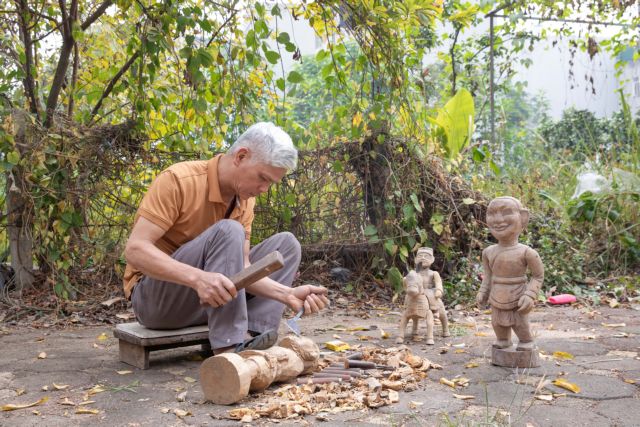 |
| “When I carve out a character, with beautiful colour blocks, the first part is to put my inspiration in there,” Bằng said. |
“We were also the first to go abroad to perform and create water puppets,” Bằng explained with complete modesty about his pioneering spirit.
These journeys brought pride to his family and made significant contributions to promoting Vietnamese culture to international friends, affirming the position of the country's water puppetry on the world’s artistry map.
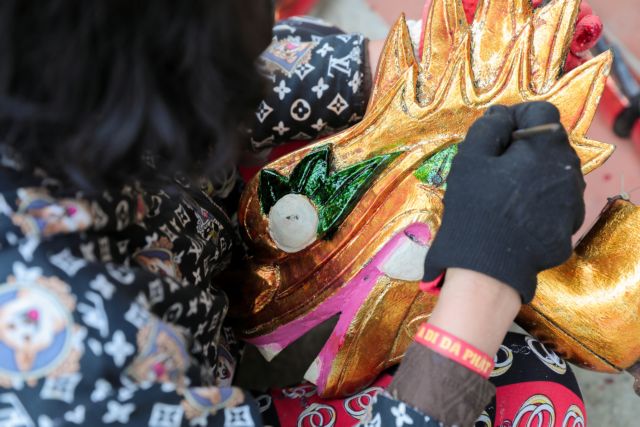 |
| A female artisan is colouring puppets. |
'Impart life into the puppet'
For artisan Bằng, sculpting a puppet is not merely a technical exercise, it's about imbuing each creation with a soul. He believes that only by truly understanding and feeling the characters' emotions can an artisan bring them to life.
“I must grasp the experiences of countless characters and listen to the elders recount. This is folk art, so we must convey our true inner feelings. Only then can we truly impart life into the puppet, and it’s paramount that the puppet has a soul,” he said.
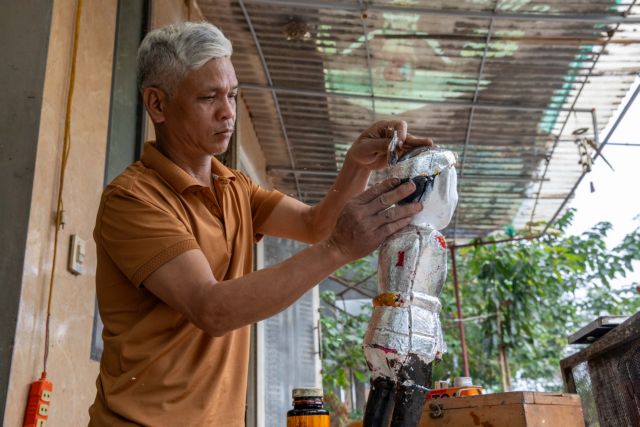 |
| A puppet is plated with silver which helps the colour become more vivid and avoid fading. |
Bằng dedicates much time to observing life around him, especially in rural areas.
“I go out into the world, observing characters, observing how people are and I apply that to folk art, to the puppet world,” he recounted.
From farmers with their muddy hands and feet to hard-working mothers, to innocent children, all become sources of inspiration for his creations.
The story of the duck herder and his wife is a prime example.
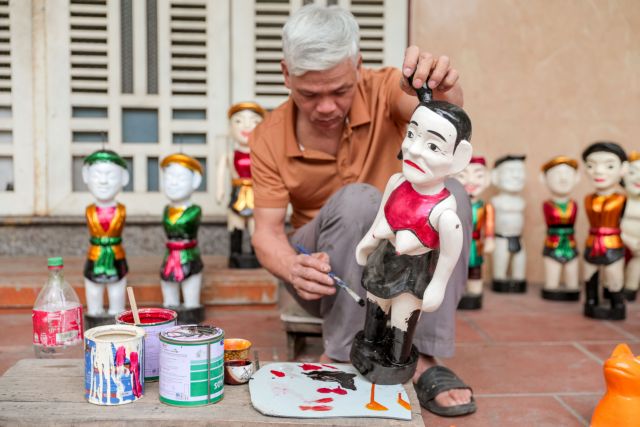 |
| The character of the duck herder's wife is meticulously created by Bằng. |
Bằng told of a man herding ducks who loses one to a fox, prompting him to call his wife for help. At that moment, his wife is breastfeeding, but out of love for her husband and concern for the ducks, she rushes to the field, even forgetting to cover herself.
This every day, almost raw detail, is brought to life by Bằng in his puppets, creating an image that is both humorous and touching, vividly portraying the image of the hardworking Vietnamese people.
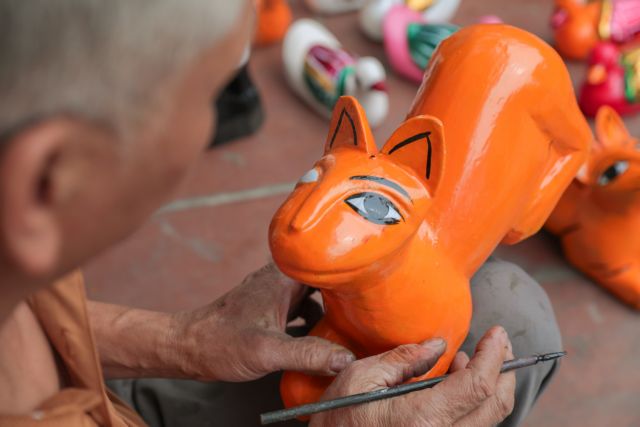 |
| The folkloric cunning of the fox character. |
“If people don’t understand, they won’t understand why the character is sculpted like that, but everything has meaning,” Bằng explained.
It is precisely these small, meticulously observed details of life that give his puppets their vibrancy and authenticity.
“I was walking down the street and I met someone. They were riding a bicycle, selling vegetables on the road, and I saw a very beautiful face. Then, I constantly imagined how to make that character unique so I can convey it,” he said.
A fleeting glance at a face on the street can also become a source of inspiration, urging him to create a puppet character with its own story.
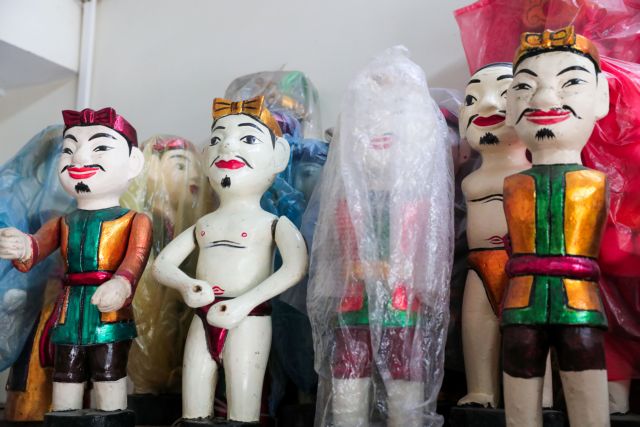 |
| Hand-made wooden puppets ready to be delivered. |
Tradition and modernity
"Both approaches present challenges, each with its own set of difficulties. With folk art, it’s not something everyone appreciates or can truly capture," Bằng said.
“Conveying the spirit of folk art means that even those without formal training or knowledge of proportions can create something beautiful, imbued with the charm of the folk style. They might even use a simple axe or knife for carving, resulting in a wonderfully rustic piece. That’s the magic of it—the beauty of folk art lies in its raw, unpretentious quality."
Art is constantly evolving for him and that means preserving tradition does not mean being closed off or conservative.
Since his youth, Bằng proactively sought formal training at the University of Industrial Fine Arts, driven by a desire to elevate the aesthetic and modernise the form of his puppet creations.
“Looking back at my work from the very beginning until now, I've kept everything for comparison and I can see a profound transformation. It's truly remarkable. And so, as things become increasingly modern, I find myself filled with a sense of excitement rather than sadness," Bằng said.
He constantly researches, creates and introduces new elements into water puppetry, while still preserving its folk essence.
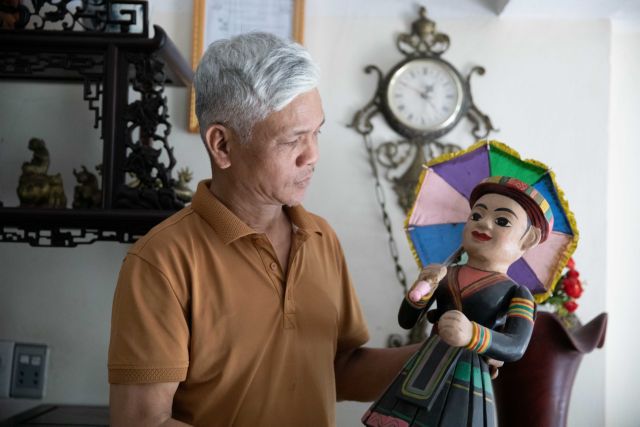 |
| The ethnic Mông puppet, created for a special performance, is kept as a memento of Bằng's work. |
Puppet performer Vũ Thanh Tùng said: “Looking at Bằng’s puppets, you can see that the puppet’s colours are brighter, it has a stronger folk essence. And the puppet's movements are more flexible.”
The use of vivid colours, combined with modern shaping techniques, makes Bằng’s puppets more brilliant and attractive while still retaining the rustic, close-to-the-people character of folk culture.
The skilful harmonisation between tradition and modernity creates new vitality for the artistry of water puppetry.
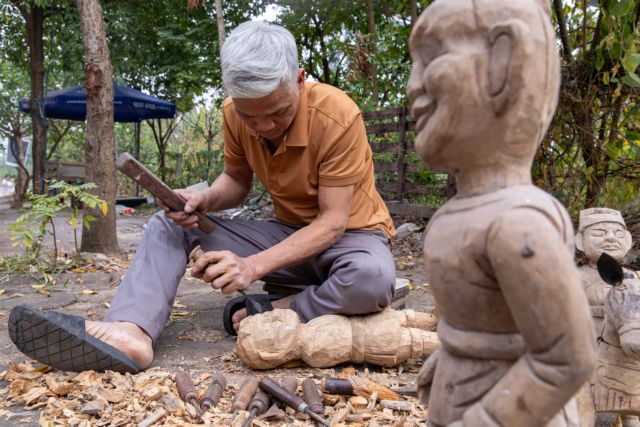 |
| Bằng is positively open to changes with a pure passion for water puppetry. |
Bằng is not just a talented artisan but is also a son deeply attached to his homeland and national culture.
He has devoted his life to "breathing life" into puppets, continuing the folk tales through a unique language, with wood and water, with all his heart and soul. — VNS



.png)
